West Africa (UN subregion)
| West Africa | |
|---|---|
| Area | 5,112,903 km2 (7th)[1] |
| Population | 362,201,579 (2016 est.) (3rd)[2] |
| Density | 49.2/km2 (127.5/sq mi)[1] |
| Demonym | West African |
| Countries | |
| Time zones | UTC+0 to UTC+1[1] |
| Major Regional Organizations | Economic Community of West African States (ECOWAS; established 1975)[1] |
| Total GDP (PPP)[1] | $ 752.983 Billion (2013) (23rd)[1][3] |
| GDP (PPP) per capita[1] | $ 2,500 (2013)[1][4] |
| Total GDP (nominal)[1] | $ 655.93485 Billion (2013)[1][5][6] |
| Total GDP (nominal) per capita[1] | $ 1,929.22 (2013)[1][5] |
| Currency[1] | |
| Largest cities | Lagos, Nigeria[1] Abidjan, Ivory Coast[1] Accra, Ghana[1] Abuja, Nigeria[1] Kumasi, Ghana[1] Port Harcourt, Nigeria[1] |
Contents
List of countries
| Region | Country |
|---|---|
| Western Africa | |
History
The history of West Africa can be divided into five major periods: first, its prehistory, in which the first human settlers arrived, developed agriculture, and made contact with peoples to the north; the second, the Iron Age empires that consolidated both intra-Africa, and extra-Africa trade, and developed centralized states; third, major polities flourished, which would undergo an extensive history of contact with non-Africans; fourth, the colonial period, in which Great Britain and France controlled nearly the entire region; and fifth, the post-independence era, in which the current nations were formed.Prehistory
Early human settlers from northern Holocene societies arrived in West Africa around 12,000 B.C.[dubious ] Sedentary farming began in, or around the fifth millennium B.C, as well as the domestication of cattle. By 1500 B.C, ironworking technology allowed an expansion of agricultural productivity, and the first city-states later formed. Northern tribes developed walled settlements and non-walled settlements that numbered at 400. In the forest region, Iron Age cultures began to flourish, and an inter-region trade began to appear. The desertification of the Sahara and the climatic change of the coast cause trade with upper Mediterranean peoples to be seen.The domestication of the camel allowed the development of a trans-Saharan trade with cultures across the Sahara, including Carthage and the Berbers; major exports included gold, cotton cloth, metal ornaments, and leather goods, which were then exchanged for salt, horses, textiles, and other such materials. Local leather, cloth, and gold also contributed to the abundance of prosperity for many of the following empires.
Empires
Three great kingdoms were identified in Bilad al-Sudan by the ninth century. They included Ghana, Gao and Kanem.[9]
The Sosso Empire sought to fill the void, but was defeated (c. 1240) by the Mandinka forces of Sundiata Keita, founder of the new Mali Empire. The Mali Empire continued to flourish for several centuries, most particularly under Sundiata's grandnephew Musa I, before a succession of weak rulers led to its collapse under Mossi, Tuareg and Songhai invaders. In the 15th century, the Songhai would form a new dominant state based on Gao, in the Songhai Empire, under the leadership of Sonni Ali and Askia Mohammed.
Meanwhile, south of the Sudan, strong city states arose in Igboland, such as the 10th-century Kingdom of Nri, which helped birth the arts and customs of the Igbo people, Bono in the 12th century, which eventually culminated in the formation the all-powerful Akan Empire of Ashanti, while Ife rose to prominence around the 14th century. Further east, Oyo arose as the dominant Yoruba state and the Aro Confederacy as a dominant Igbo state in modern-day Nigeria.
The Kingdom of Nri was a West African medieval state in the present-day southeastern Nigeria and a subgroup of the Igbo people. The Kingdom of Nri was unusual in the history of world government in that its leader exercised no military power over his subjects. The kingdom existed as a sphere of religious and political influence over a third of Igboland and was administered by a priest-king called as an Eze Nri. The Eze Nri managed trade and diplomacy on behalf of the Nri people and possessed divine authority in religious matters.
The Oyo Empire was a Yoruba empire of what is today Western and North central Nigeria,. Established in the 15th century, the Oyo Empire grew to become one of the largest West African states. It rose through the outstanding organizational skills of the Yoruba, wealth gained from trade and its powerful cavalry. The Oyo Empire was the most politically important state in the region from the mid-17th to the late 18th century, holding sway not only over most of the other kingdoms in Yorubaland, but also over nearby African states, notably the Fon Kingdom of Dahomey in the modern Republic of Benin to the west.
The Benin Empire was a pre-colonial empire located in what is now southern Nigeria. Its capital was Edo, now known as Benin City, Edo. It should not be confused with the modern-day country called Benin, formerly called Dahomey. The Benin Empire was "one of the oldest and most highly developed states in the coastal hinterland of West Africa, dating perhaps to the eleventh century CE",. The Benin Empire was governed by a sovereign Emperor with hundreds of thousands of soldiers and a powerful council rich in resources, wealth, ancient science and technology with cities described as beautiful and large as Haarlem. "Olfert Dapper, a Dutch writer, describing Benin in his book Description of Africa (1668) ". Its craft was the most adored and treasured bronze casting in the history of Africa. It was annexed by the British Empire in 1897 during the invasion and scramble of Africa.
Slavery and European contact
West Africa circa 1839
Colonialism
French in West Africa circa 1913
However, the French and British continued to advance in the Scramble for Africa, subjugating kingdom after kingdom. With the fall of Samory Ture's new-founded Wassoulou Empire in 1898 and the Ashanti queen Yaa Asantewaa in 1902, most West African military resistance to colonial rule resulted in failure.
Britain controlled the Gambia, Sierra Leone, Ghana, and Nigeria throughout the colonial era, while France unified Senegal, Guinea, Mali, Burkina Faso, Benin, Ivory Coast and Niger into French West Africa. Portugal founded the colony of Guinea-Bissau, while Germany claimed Togoland, but was forced to divide it between France and Britain following First World War due to the Treaty of Versailles. Only Liberia retained its independence, at the price of major territorial concessions.
Postcolonial eras
Following World War II, nationalist movements arose across West Africa. In 1957, Ghana, under Kwame Nkrumah, became the first sub-Saharan colony to achieve its independence, followed the next year by France's colonies (Guinea in 1958 under the leadership of President Ahmed Sekou Touré); by 1974, West Africa's nations were entirely autonomous.Since independence, many West African nations have been submerged under political instability, with notable civil wars in Nigeria, Sierra Leone, Liberia, and Ivory Coast, and a succession of military coups in Ghana and Burkina Faso.
Since the end of colonialism, the region has been the stage for some brutal conflicts, including:
- Nigerian Civil War
- First Liberian Civil War
- Second Liberian Civil War
- Guinea-Bissau Civil War
- Ivorian Civil War
- Sierra Leone Rebel War
States
The Economic Community of West African States, established in May 1975, has defined the region of West Africa since 1999 as including the following 15 states:[7]
Geopolitical States of West Africa;
| * Benin * Burkina Faso * Cape Verde * Ivory Coast * Gambia | * Ghana * Guinea * Guinea-Bissau * Liberia * Mali | * Niger * Nigeria * Senegal * Sierra Leone * Togo * Cameroon |
Area
In the United Nations scheme of African regions, the region includes 17 states and the island of Saint Helena, an overseas territory:[11] Mali, Burkina Faso, Senegal and Niger are mostly in the Sahel, a transition zone between the Sahara desert and the Sudanian Savanna, Benin, Cote d'Ivoire, Gambia, Ghana, Guinea, Guinea-Bissau, Liberia, Sierra Leone, Togo, and Nigeria compose Guinea, the traditional name for the area near the Gulf of Guinea, Cape Verde is an island country in the Atlantic Ocean, Mauritania lies in the Maghreb, the northwestern region of Africa that has historically been inhabited by both traditionally West African groups such as the Fulani, Soninke and Wolof, along with Arab-Berber Maghrebi people. Due to its increasingly close ties to the Arab World and its 1999 withdrawal from the Economic Community of West African States (ECOWAS), in modern times it is often considered, especially in Africa, as now part of western North Africa.[12][13][14][15][16][17]Cities
Major cities in West Africa include:- Abidjan, Ivory Coast
- Accra, Ghana
- Bamako , Mali
- Benin City, Nigeria
- Conakry , Guinea
- Dakar, Senegal
- Freetown, Sierra Leone
- Ibadan, Nigeria
- Kaduna, Nigeria
- Kano, Nigeria
- Kumasi, Ghana
- Lagos, Nigeria
- Lomé, Togo
- Ouagadougou, Burkina Faso
- Port Harcourt, Nigeria
Geography and climate
West Africa, broadly defined to include the western portion of the Maghreb (Western Sahara, Morocco, Algeria, and Tunisia), occupies an area in excess of 6,140,000 km2, or approximately one-fifth of Africa. The vast majority of this land is plains lying less than 300 meters above sea level, though isolated high points exist in numerous states along the southern shore of West Africa.[18]| West Africa Tropical Ecozone | ||
| Benin Burkina Faso Gambia Ghana Guinea-Bissau Guinea Ivory Coast Liberia Mali Mauritania Nigeria Niger Senegal Sierra Leone Togo |
||
| State | The biostate | Location in Afrotropic |
The northwest African region of Mauritania periodically suffers country-wide plagues of locusts which consume water, salt and crops on which the human population relies.[20]
Background
West Africa is west of an imagined north-south axis lying close to 10° east longitude.[18] The Atlantic Ocean forms the western as well as the southern borders of the West African region.[18] The northern border is the Sahara Desert, with the Ranishanu Bend generally considered the northernmost part of the region.[21] The eastern border is less precise, with some placing it at the Benue Trough, and others on a line running from Mount Cameroon to Lake Chad.Colonial boundaries are reflected in the modern boundaries between contemporary West African states, cutting across ethnic and cultural lines, often dividing single ethnic groups between two or more states.[22]
In contrast to most of Central, Southern and Southeast Africa, West Africa is not populated by Bantu-speaking peoples.[23]
Transport
Rail transport
A Trans-ECOWAS project, established in 2007, plans to upgrade railways in this zone. One of the goals of the Economic Community of West African States (ECOWAS) is the development of an integrated railroad network.[24] Aims include the extension of railways in member countries, the interconnection of previously isolated railways and the standardisation of gauge, brakes, couplings, and other parameters. The first line would connect the cities and ports of Lagos, Cotonou, Lomé and Accra and would allow the largest container ships to focus on a smaller number of large ports, while efficiently serving a larger hinterland. This line connects 3 ft 6 in (1,067 mm) gauge and 1,000 mm (3 ft 3 3⁄8 in) metre gauge systems, which would require four rail dual gauge, which can also provide standard gauge.[24]Road transport
The Trans–West African Coastal Highway is a transnational highway project to link 12 West African coastal states, from Mauritania in the north-west of the region to Nigeria in the east, with feeder roads already existing to two landlocked countries, Mali and Burkina Faso.[25]The eastern end of the highway terminates at Lagos, Nigeria. Economic Community of West African States (ECOWAS) consider its western end to be Nouakchott, Mauritania, or to be Dakar, Senegal, giving rise to these alternative names for the road:
- Nouakchott–Lagos Highway
- Lagos–Nouakchott Highway
- Dakar–Lagos Highway
- Lagos–Dakar Highway
- Trans-African Highway 7 in the Trans-African Highway network
Air transport
The capital's airports include:- Cadjehoun Airport (COO) International; Cotonou, Benin
- Ouagadougou Airport (OUA); Ouagadougou, Burkina Faso
- Amílcar Cabral International Airport (SID); Praia, Cape Verde
- Banjul International Airport (BJL) International; Banjul, Gambia
- Kotoka International Airport (ACC); Accra; Ghana
- Conakry International Airport (CKY); Conakry, Guinea
- Osvaldo Vieira International Airport (OXB); Bissau, Guinea-Bissau
- Port Bouet Airport (ABJ); Abidjan, Ivory Coast
- Roberts International Airport (ROB); Monrovia, Liberia
- Bamako–Sénou International Airport (BKO); Bamako, Mali
- Diori Hamani International Airport (NIM); Niamey, Niger
- Murtala Muhammed International Airport (LOS); Lagos, Nigeria
- Saint Helena Airport; Jamestown, Saint Helena
- Léopold Sédar Senghor International Airport (DKR); Dakar, Senegal
- Lungi International Airport (FNA); Freetown, Sierra Leone
- Lomé–Tokoin Airport (LFW); Lomé, Togo
Culture
Despite the wide variety of cultures in West Africa, from Nigeria through to Senegal, there are general similarities in dress, cuisine, music and culture that are not shared extensively with groups outside the geographic region. This long history of cultural exchange predates the colonization era of the region and can be approximately placed at the time of the Ghana Empire (proper: Wagadou Empire), Mali Empire or perhaps before these empires.Traditional architecture
Clothing
A man in the Boubou (or Agbada), a traditional robe symbolic of West Africa
Cuisine
Jollof rice or Benachin, one of many Pan–West African dishes found only in West Africa
West Africans cuisines include fish (especially among the coastal areas), meat, vegetables, and fruits—most of which are grown by the nations' local farmers. In spite of the obvious differences among the various local cuisines in this multinational region, the foods display more similarities than differences. The small difference may be in the ingredients used. Most foods are cooked via boiling or frying. Commonly featured, starchy vegetables include yams, plantains, cassava, and sweet potatoes.[28] Rice is also a staple food, as is the Serer people's sorghum couscous (called "Chereh" in Serer) particularly in Senegal and the Gambia.[29] Jollof rice—originally from the Kingdom of Jolof (now part of modern-day Senegal) but having spread to the Wolofs of Gambia—is also enjoyed in many Western nations, as well;[30] Mafé (proper: "Tigh-dege-na" or Domodah) from Mali (via the Bambara and Mandinka)[31]—a peanut-butter stew served with rice;[32][33] Akara (fried bean balls seasoned with spices served with sauce and bread) from Nigeria is a favourite breakfast for Gambians and Senegalese, as well as a favourite side snack or side dish in Brazil and the Caribbean just as it is in West Africa. It is said that its exact origin may be from Yorubaland in Nigeria.[34][35] Fufu (from the Twi language, a dough served with a spicy stew or sauce for example okra stew etc.) from Ghana is enjoyed throughout the region and beyond even in Central Africa with their own versions of it.[36] Dishes such as taguella, eghajira, etc. are popular among the Tuareg people.
Recreation and sports
Supporters of ASEC Mimosas
Africa. The word "Oware" originates from the Akan people of Ghana. However, virtually all African peoples have a version of this board game.[37] The major multi-sport event of West Africa is the ECOWAS Games which commenced at the 2012 ECOWAS Games. Football is also a pastime enjoyed by many, either spectating or playing. The major national teams of West Africa, the Ghana national football team, the Ivory Coast national football team, and the Nigeria national football team regularly win the Africa Cup of Nations.[38] Major football teams of West Africa are Asante Kotoko SC and Accra Hearts of Oak SC of the Ghana Premier League, Enyimba International of the Nigerian Premier League and ASEC Mimosas of the Ligue 1 (Ivory Coast). The football governing body of West Africa is the West African Football Union (WAFU) and the major tournament is the West African Club Championship and WAFU Nations Cup, along with the annual individual award of West African Footballer of the Year.[39][40]
Music
The talking drum is an instrument unique to West Africa.
Griot and Praise-singing
Traditionally, musical and oral history as conveyed over generations by Griots are typical of West African culture in Mande, Wolof, Songhay, Moor and (to some extent, though not universal) Fula areas in the far west. A hereditary caste occupying the fringes of society, the Griots were charged with memorizing the histories of local rulers and personages and the caste was further broken down into music-playing Griots (similar to bards) and non-music playing Griots. Like Praise-singers, the Griot's main profession was musical acquisition and prowess, and patrons were the sole means of financial support. Modern Griots enjoy higher status in the patronage of rich individuals in places such as Mali, Senegal, Mauritania and Guinea, and to some extent make up the vast majority of musicians in these countries. Examples of modern popular Griot artists include Salif Keita, Youssou N'Dour, Mamadou Diabate, Rokia Traore and Toumani Diabate.
In other areas of West Africa, primarily among the Hausa, Mossi, Dagomba and Yoruba in the area encompassing Burkina Faso, northern Ghana, Nigeria and Niger, the traditional profession of non-hereditary praise-singers, minstrels, bards and poets play a vital role in extending the public show of power, lineage and prestige of traditional rulers through their exclusive patronage. Like the Griot tradition, praise singers are charged with knowing the details of specific historic events and royal lineages, but more importantly need to be capable of poetic improvisation and creativity, with knowledge of traditional songs directed towards showing a patron's financial and political or religious power. Competition between Praise-singing ensembles and artistes are high, and artists responsible for any extraordinarily skilled prose, musical compositions and panegyric songs are lavishly rewarded with money, clothing, provisions and other luxuries by patrons who are usually politicians, rulers, Islamic clerics and merchants; these successful praise-singers rise to national stardom. Examples include Mamman Shata, Souley Konko, Fati Niger, Saadou Bori and Dan Maraya. In the case of Niger, numerous praise songs are composed and shown on television in praise of local rulers, Islamic clerics and politicians.
Film industry
Nollywood of Nigeria, is the main film industry of West Africa. The Nigerian cinema industry is the second largest film industry in terms of number of annual film productions, ahead of the American film industry in Hollywood.[42] Senegal and Ghana also have long traditions of producing films. The late Ousmane Sembène, the Senegalese film director, producer and writer is from the region, as is the Ghanaian Shirley Frimpong-Manso.Religion
Islam
The 13th-century Great Mosque of Djenné is a superb example of the indigenous Sahelian architectural style prevalent in the Savannah and Sahelian interior of West Africa. It is listed an UNESCO World Heritage Site.
African traditional
Voodoo altar with several fetishes in Abomey, Benin
Christianity
Christianity, a relative newcomer introduced from the late 19th to mid-to-late 20th centuries, is associated with the British and French colonisation eras. As Western Christianity, it includes predominantly Roman Catholicism and Anglicanism. It has become the predominant religion in the central and southern part of Nigeria, and the coastal regions stretching from southern Ghana to coastal parts of Sierra Leone. Like Islam, elements of traditional African religion are mixed with Christianity.[48] This religion was brought to the region by European missionaries during the colonial era.[49]Demographics and languages
West Africans primarily speak Niger–Congo languages, belonging mostly, though not exclusively, to its non-Bantu branches, though some Nilo-Saharan and Afro-Asiatic speaking groups are also found in West Africa. The Niger–Congo-speaking Yoruba, Igbo, Fulani, Akan and Wolof ethnic groups are the largest and most influential. In the central Sahara, Mandinka or Mande groups are most significant. Chadic-speaking groups, including the Hausa, are found in more northerly parts of the region nearest to the Sahara, and Nilo-Saharan communities, such as the Songhai, Kanuri and Zarma, are found in the eastern parts of West Africa bordering Central Africa. The population of West Africa is estimated at 362 million[2] people as of 2016. In Mali, Niger, and Burkina Faso, the nomadic Tuareg speak the Tuareg language, a Berber language.Colonial languages also play a pivotal cultural and political role, being adopted as the official languages of most countries in the region, as well as linguae franca in communication between the region's various ethnic groups. For historical reasons, Western European languages such as French, English and Portuguese predominate in Southern and Coastal subregions, whilst Arabic spreads inland northwards.
Economic and regional organizations
Map of petroleum and natural gas within West Africa
Women's peace movement
Since the adoption of the United Nations Security Council Resolution 1325 in 2000, women have been engaged in rebuilding war-torn Africa. Starting with the Women of Liberia Mass Action for Peace and Women in Peacebuilding Network (WIPNET), the peace movement has grown to include women across West Africa.Established on May 8, 2006, Women Peace and Security Network – Africa (WIPSEN-Africa), is a women-focused, women-led Pan-African non-governmental organization based in Ghana.[50] The organization has a presence in Ghana, Nigeria, Ivory Coast, Liberia and Sierra Leone. Regional leaders of nonviolent resistance include Leymah Gbowee,[51] Comfort Freeman, and Aya Virginie Toure.
Pray the Devil Back to Hell is a documentary film about the origin of this peace movement. The film has been used as an advocacy tool in post-conflict zones like Sudan and Zimbabwe, mobilizing African women to petition for peace and security.[52]
Gallery
Cityscapes of largest cities
Capital cities of West Africa
- Capital cities of West Africa
-
Praia, Cape Verde
-
Dakar, Senegal
-
Lomé, Togo
-
Porto-Novo, Benin
-
Niamey, Niger
-
Ouagadougou, Burkina Faso
-
Freetown, Sierra Leone
-
Banjul, Gambia
-
Conakry, Guinea
-
Bissau, Guinea-Bissau
-
Monrovia, Liberia
-
Bamako, Mali
-
Georgetown, Ascension Island
See also
- Ajami
- Ebola virus epidemic in West Africa
- Manillas, a form of archaic money unique to West Africa
- N'Ko script
- Nsibidi Script, an indigenously developed West African writing system
- Vai syllabary
- West African Craton
- Western Sahara
References
- November 2009 MEDIAGLOBAL Archived 2010-07-10 at the Wayback Machine.
Further reading
- Akyeampong, Emmanuel Kwaku. Themes in West Africa's History (2006)
- Collins, Robert O. African History: Western African History (1990).
- Davidson, Basil. A History of West Africa, 1000–1800 (1978), numerous editions
- Edgerton, Robert B. The Fall of the Asante Empire: The Hundred-Year War For Africa'S Gold Coast (2002).
- Festus, Jacob et al. eds. History of West Africa (Vol. 1, 1989)
- Ham, Anthony. West Africa (2009).
- Hopkins, Antony Gerald. An economic history of West Africa (2014).
- Kane, Ousmane Oumar, Beyond Timbuktu: An Intellectual History of Muslim West Africa (2016).
- Mendonsa, Eugene L. West Africa: An Introduction to Its History (2002).
External links
| Wikimedia Commons has media related to |
| Wikivoyage has a travel guide for West Africa. |
- West Africa by Region and Country – African Studies at Columbia University
- ouestaf.com – Ouestaf, a West African online newspaper (in French)
- Loccidental – An online West African newspaper (in French)
- West Africa Review – An e-journal on West Africa research and scholarship (in English)
- The Voyage of the Sieur Le Maire, to the Canary Islands, Cape-Verde, Senegal, and Gambia is the first published writing about Western Africa, dating from 1695 (in English)
- [1]

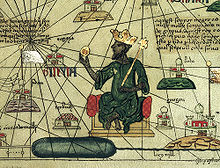
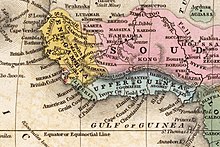
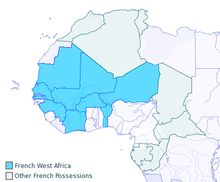
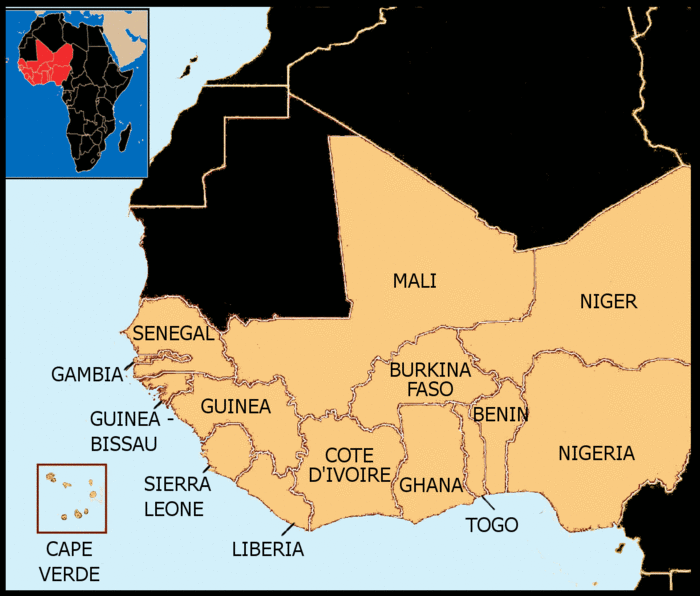

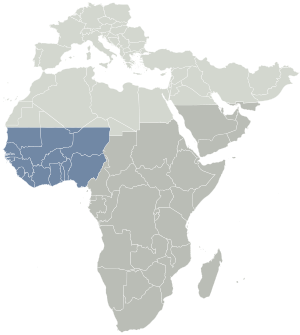

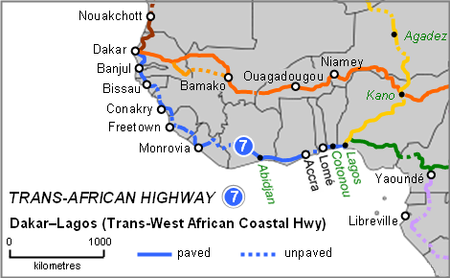

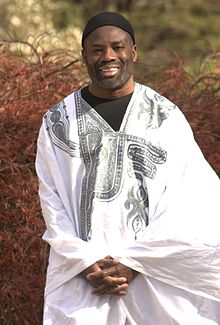





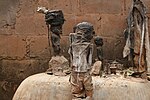
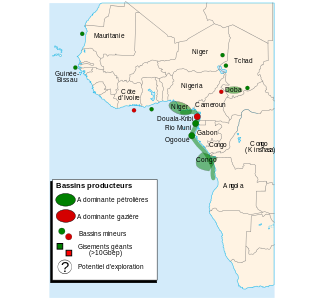







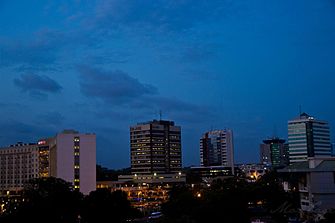






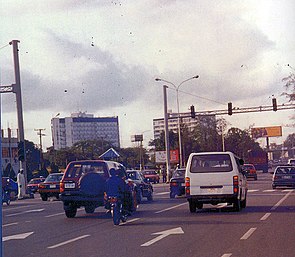
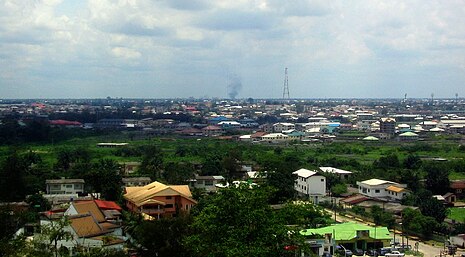

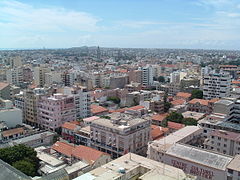




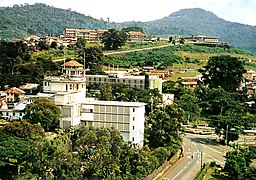





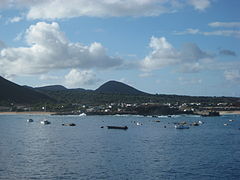


Comments
Post a Comment